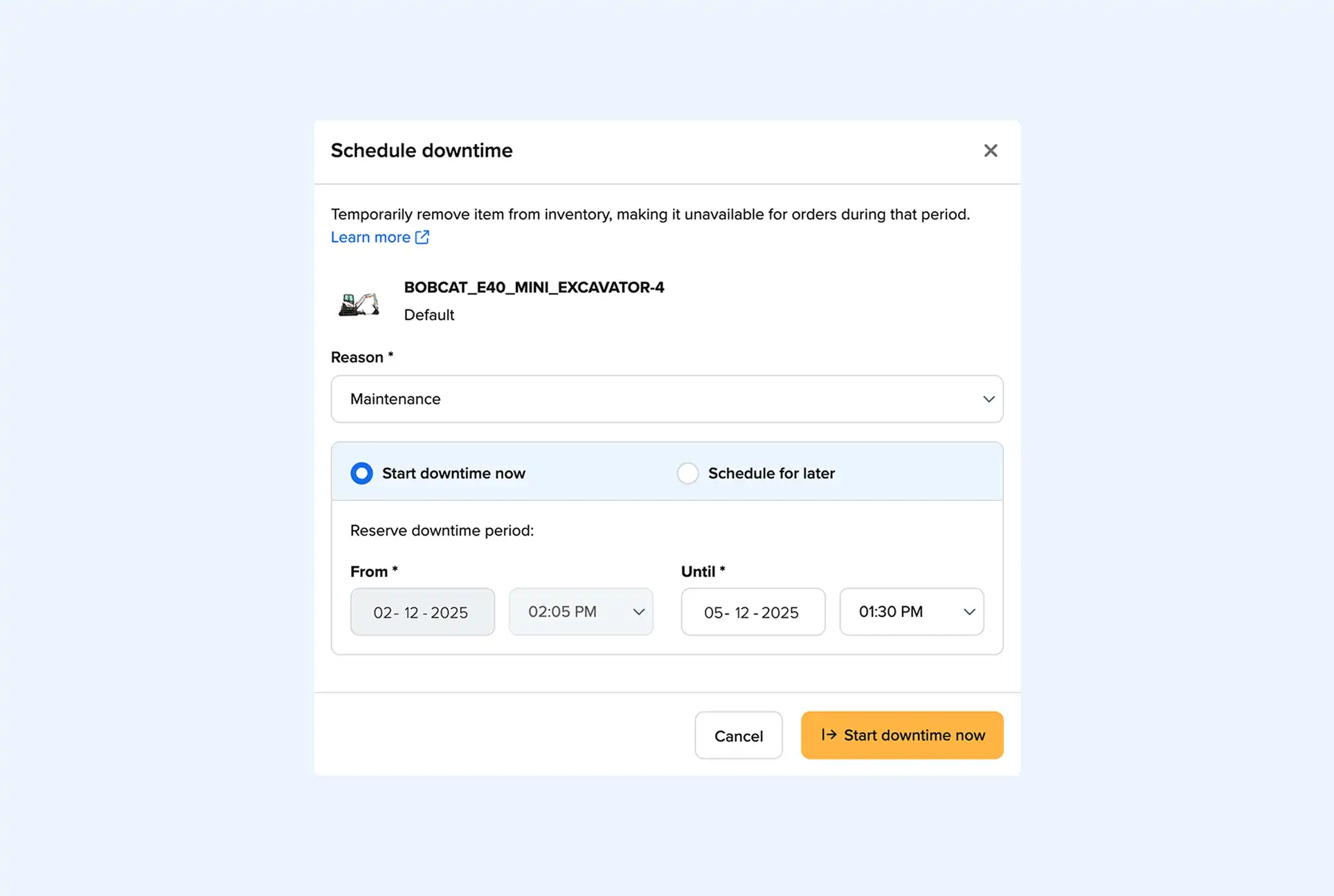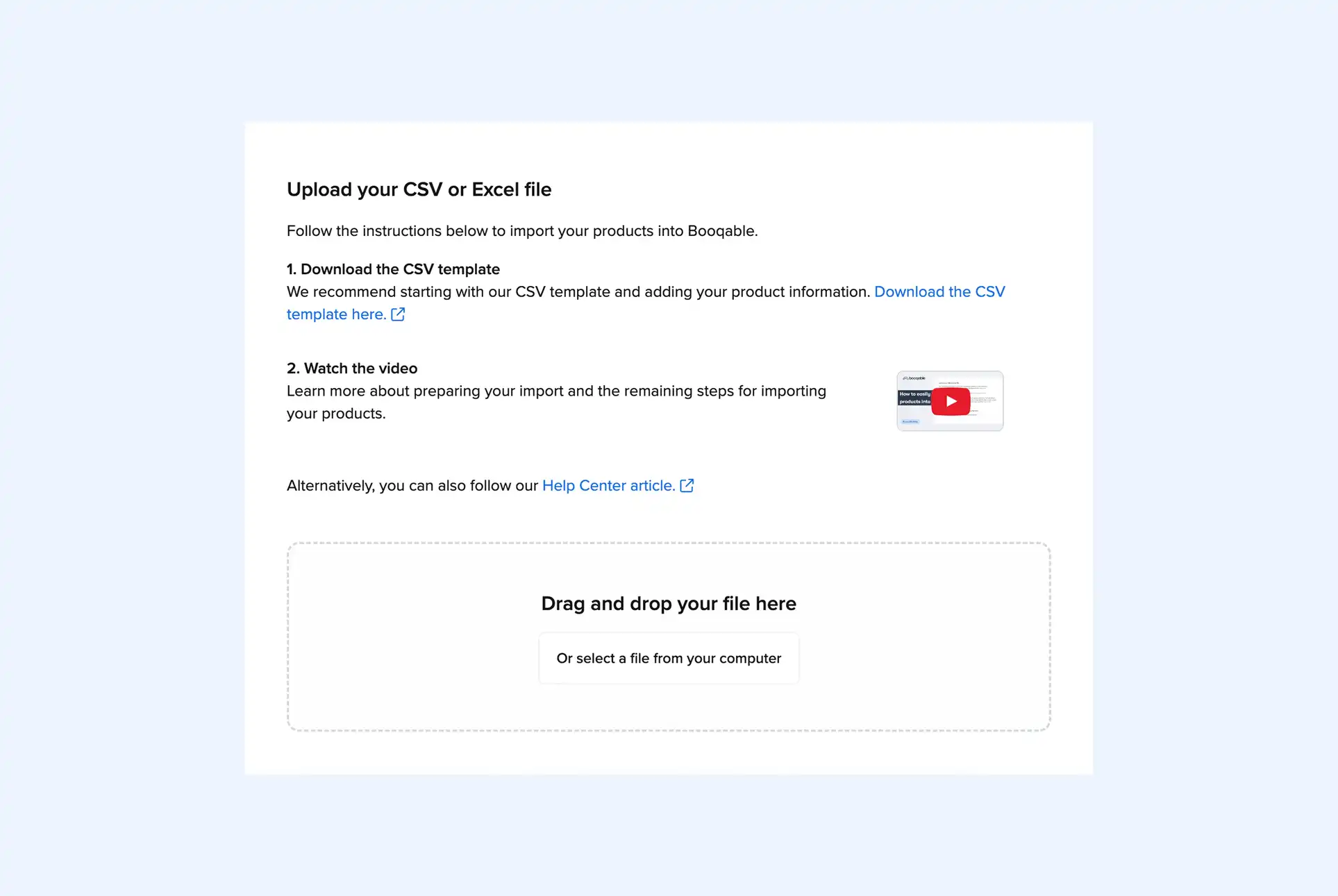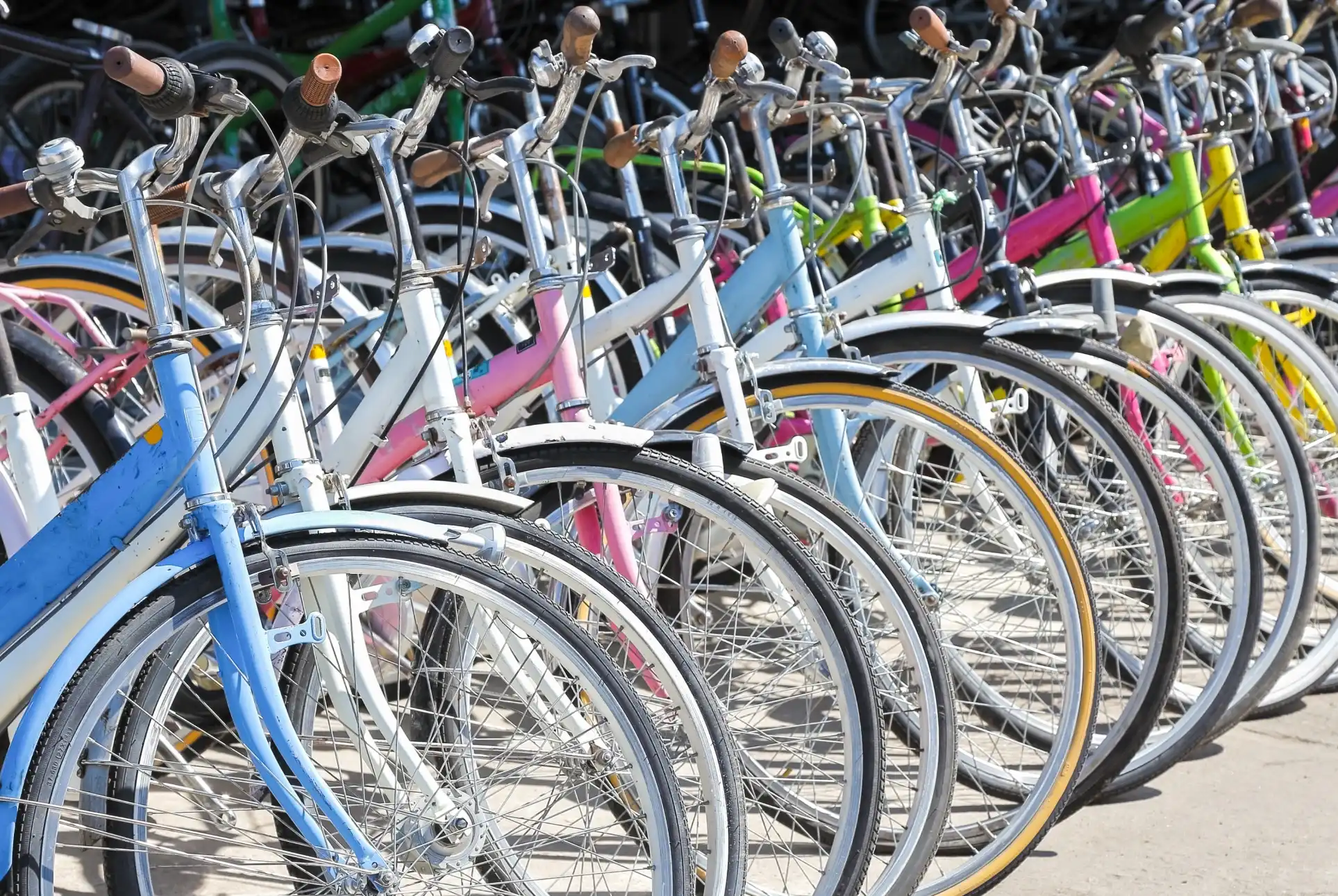Managing a company’s equipment and assets effectively is critical to success in fast-paced business environments, particularly for industries where sharing equipment is common. Whether you’re overseeing a small team or a larger organization with substantial inventories, knowing how to track equipment in a company is essential for minimizing loss, optimizing asset usage, and maintaining operational efficiency.
Modern tools like Booqable have revolutionized the asset tracking process, offering real-time visibility, enhanced accountability, and streamlined operations. In this comprehensive guide, we’ll explore critical methods to track company assets and why rental software, particularly Booqable, is an ideal solution for efficient equipment inventory management.
Start your rental business for just 29/month
Put your toes in the water and test the demand in your area with a rental website for just 29/month.
Why efficient asset tracking matters
Efficient asset tracking provides a clear, real-time picture of your company’s equipment status, location, and usage. Before diving into the specifics, let’s briefly touch on why keeping a close eye on your company’s equipment is so crucial:
- Preventing loss and misplacement: Equipment can easily get misplaced or lost without an effective tracking system. Clear documentation and real-time tracking help eliminate this issue.
- Maximizing utilization: Knowing which assets are in use and which are available allows companies to optimize the usage of each piece of equipment.
- Enhancing accountability: With clear assignment of responsibility, employees or renters become more accountable for the equipment they use.
- Compliance: Meet regulatory requirements for asset reporting and documentation.
- Improved decision-making: Make informed choices about equipment investments based on usage patterns and performance data.
Now, let’s explore how to keep track of equipment inventory using software like Booqable.
How to track equipment in a company
Implementing an effective equipment tracking system involves several key steps. You can significantly improve your asset management processes by following these methods and leveraging the power of modern software solutions like Booqable. Here’s how to track equipment in a company effectively:
1. Implement a digital asset-tracking system
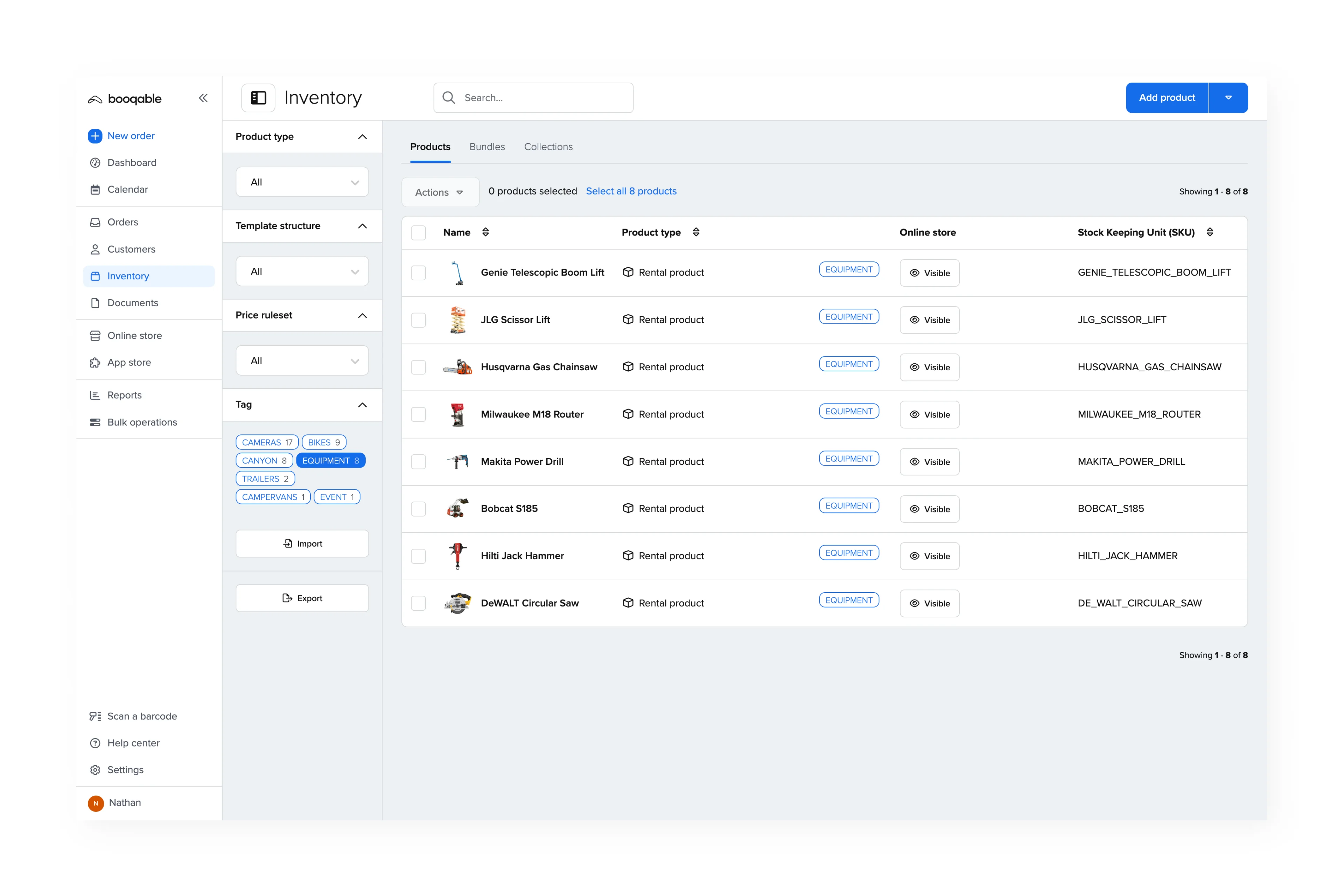
Gone are the days of manual spreadsheets and paper logs. Today, a digital asset tracking system is the most efficient way to track company assets. Booqable has features that companies with extensive or shared inventories can utilize to improve asset management.
With Booqable, you can easily input every item into a centralized database, complete with details like serial numbers, images, and more. This system creates a comprehensive overview of your equipment, which is easy to navigate and update.
Key features:
- Cloud-based inventory management: Access your equipment data from anywhere, whether in the office or on the go.
- Custom fields: Tailor the system to track specific asset details.
- Real-time availability tracking: Always know which items are available or lent out.
- Mobile app support: Manage your inventory on the go with Booqable’s mobile application.
2. Use barcode or QR code scanning for accuracy
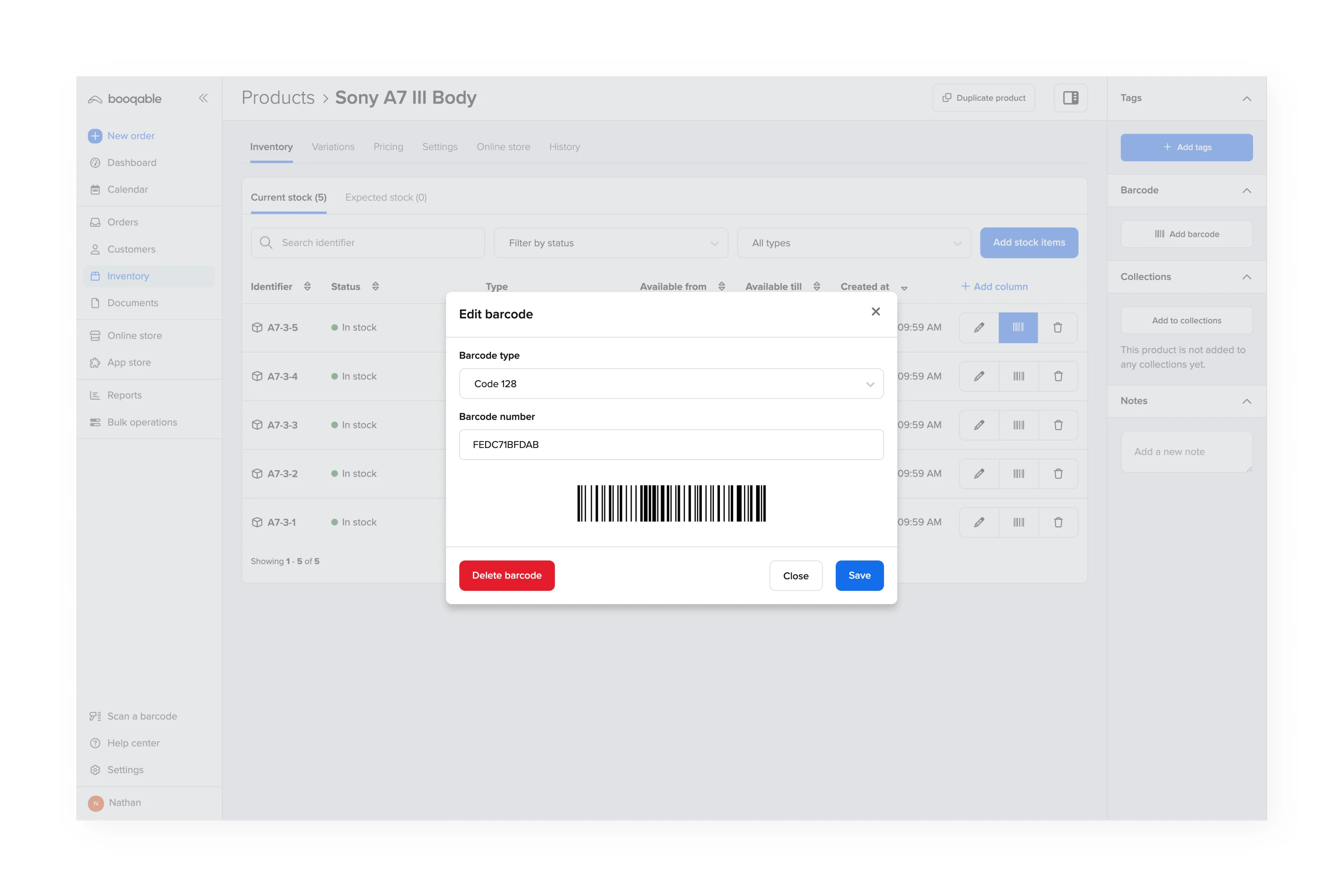
If you’re wondering how to keep track of assets in real time, leveraging barcode or QR code scanning is a game-changer. Booqable allows you to tag each piece of equipment with a barcode or QR code for easy scanning. This streamlines the process of checking items in and out of the inventory and provides real-time updates on their status.
How it works:
- Each item is tagged with a unique barcode or QR code.
- When the equipment is loaned out or returned, scanning the code updates its status in the system.
- The software logs who is responsible for the item and when it’s due for return, enhancing accountability and ensuring transparency.
- Use Booqable’s mobile app to scan codes and update inventory on the spot, reducing data entry errors and saving time.
3. Automate reservations and availability tracking
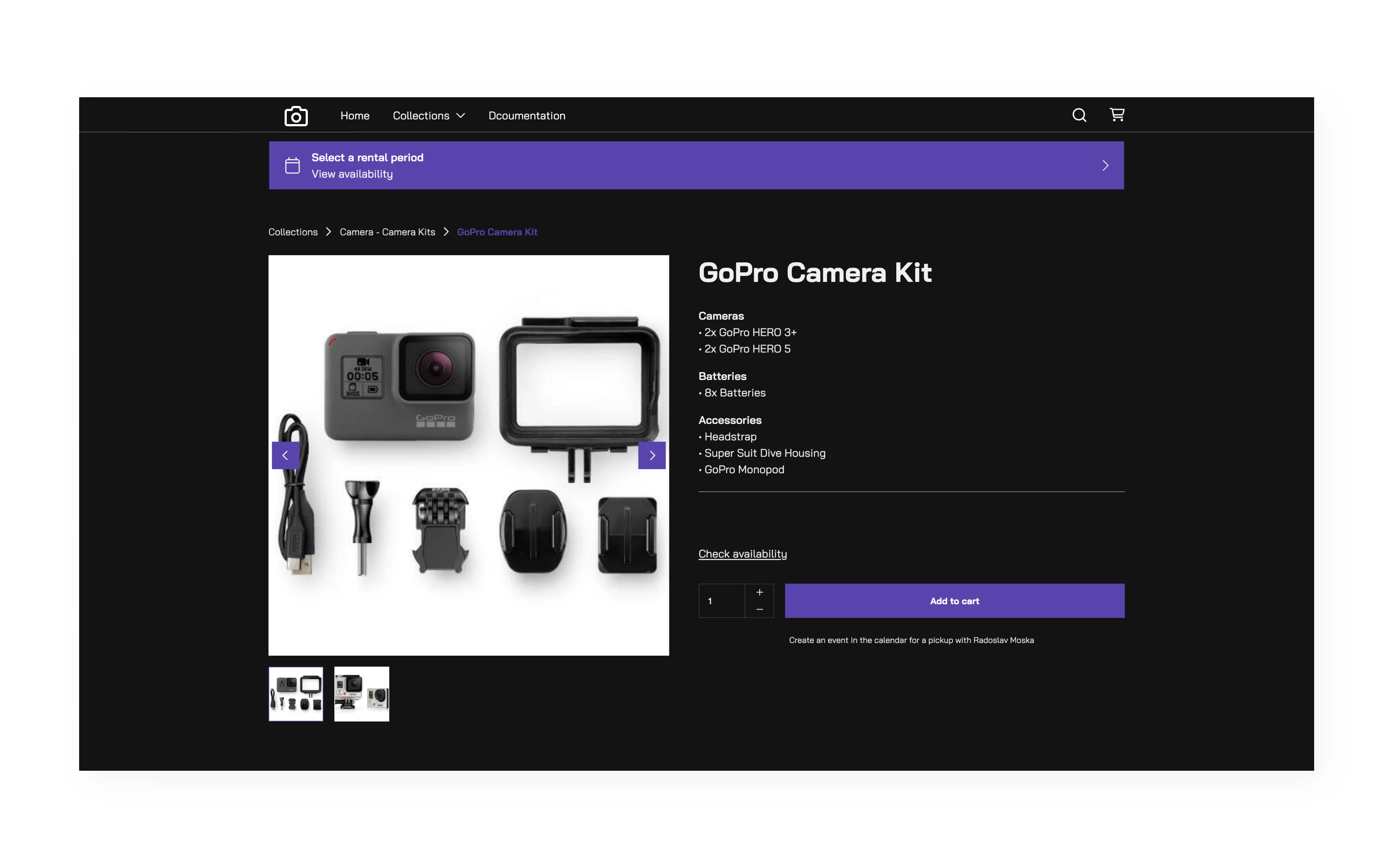
Keeping track of which equipment is available or reserved is often a headache for companies managing high volumes of assets. Booqable solves this problem by automating reservations and availability tracking.
When employees reserve equipment, the system automatically updates its availability. This reduces the risk of double bookings and ensures you always know the status of your inventory.
Highlights:
- Real-time availability: Easily see which items are available and when they’ll be back.
- Conflict-free reservations: Avoid double bookings and overscheduling with automatic updates.
- Flexible rental periods: Schedule rentals for specific time slots or allow for flexible periods.
- Online booking system: Allow team members to book equipment directly through your website, which you can create with Booqable’s website builder.
4. Generate reports for asset performance and utilization
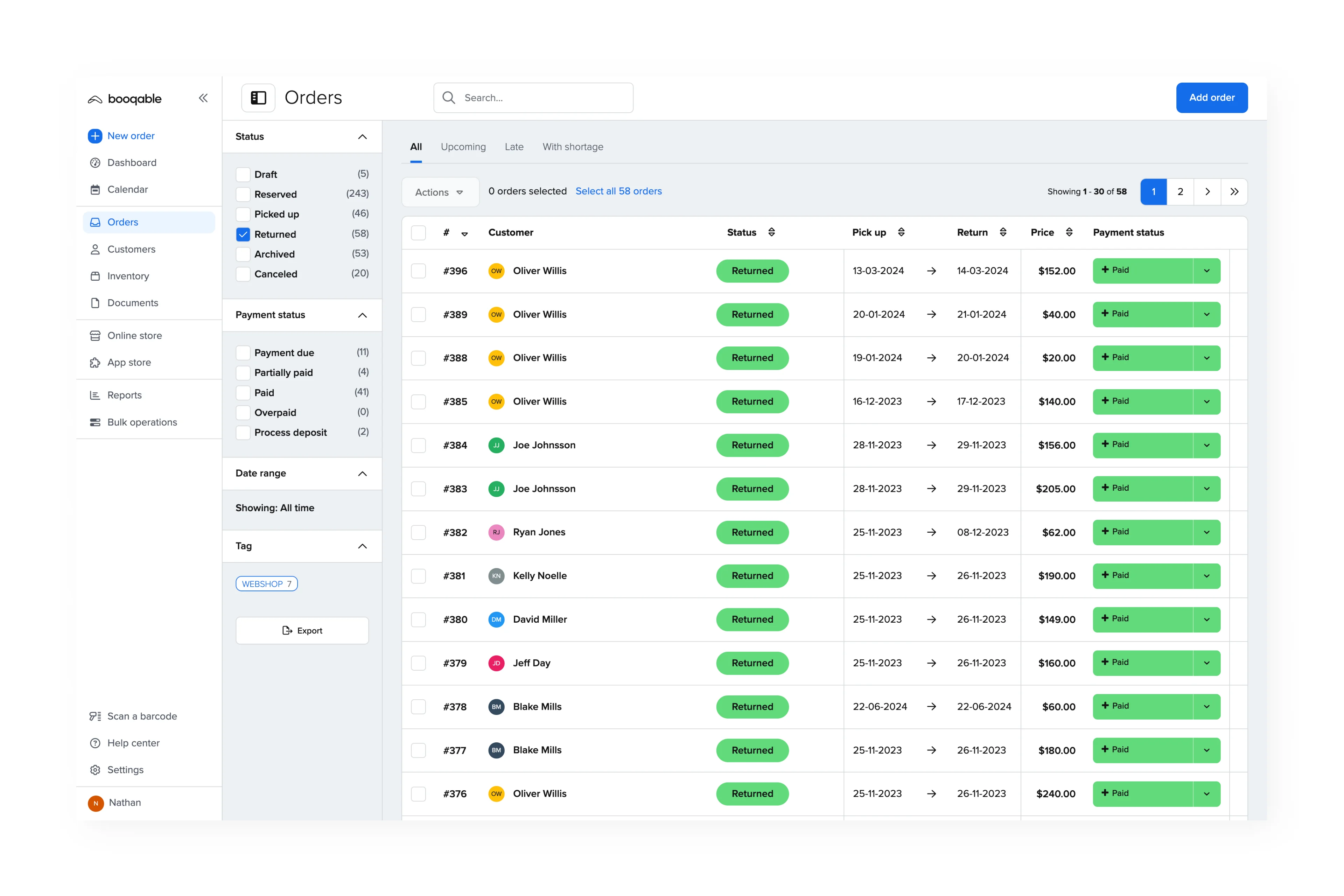
Booqable also makes it easy to generate detailed reports that provide insights into your asset usage and performance. This feature lets you track how often specific equipment is used, which assets are most popular, and when items are underutilized. These insights help you make data-driven decisions about purchases, repairs, or equipment retirements.
Reporting capabilities:
- Utilization reports: Know which assets are your highest performers and which are sitting idle.
- Customizable filters: Generate reports by asset type, usage, or period to gain tailored insights.
- Export options: Easily share reports with stakeholders in formats like CSV.
Join thousands of rental business owners
In the last 12 months, hundreds of people have started their business with Booqable.
Best practices for ongoing asset management
Implementing a robust equipment tracking system is just the first step in effective asset management. To ensure long-term success and maximize the benefits of your tracking efforts, it’s important to adopt and maintain best practices. These strategies will help you keep your asset management system up-to-date, relevant, and aligned with your business goals.
- Regular updates: Update your inventory database whenever equipment is acquired, retired, or transferred to keep it current.
- Use data for decision-making: Leverage the reports and analytics from your asset-tracking software to inform purchasing decisions and identify opportunities for optimization.
- Integrate with other systems: Look for ways to connect your asset tracking system with other business software, such as accounting or CRM systems, for a more holistic view of your operations. Booqable offers integrations with popular platforms to streamline your workflow.
- Encourage accountability: Implement check-in/check-out procedures for equipment to foster a sense of responsibility among users. Booqable’s user-friendly interface makes this process simple for all team members.
- Stay flexible: As your business grows, be prepared to adapt your asset-tracking methods to meet changing needs. Booqable’s scalable solution can grow with your company, from small teams to large enterprises.
By leveraging Booqable’s powerful features, businesses can streamline their equipment tracking processes, improve utilization rates, and make data-driven decisions about their assets. Whether you’re managing a small team or overseeing a large organization’s inventory, Booqable provides the tools you need to keep your equipment organized and optimally utilized.
Most important takeaways
Prevent loss and misplacement: Implementing a digital asset tracking system like Booqable helps prevent equipment loss by offering real-time visibility and accurate documentation.
Maximize equipment utilization: Tracking which assets are in use or available ensures better utilization, allowing businesses to maximize the ROI on their equipment investments.
Enhance accountability: Assigning responsibility for assets through check-in/check-out systems reduces the risk of mishandling and increases accountability among employees or renters.
Automate reservations and availability: Booqable’s automated reservation system prevents double bookings, tracks availability in real-time, and simplifies asset management workflows.
Make data-driven decisions: Generate detailed reports on asset usage, performance, and maintenance history to make informed decisions on purchases, repairs, and asset retirements.


